The Skin Coder is a design tool for facilitating a streamlined approach to environmental facade design – integrating analysis and design together, for optimised facade performance.
PREFACE
The AEC (Architecture, Engineering and Construction) industry accounts for 23% of global energy demands. Typically, 51% of a buildings energy usage is for heating and cooling in order to achieve indoor comfort.
As it is for all living beings, majority of natural heat gain or loss occurs at the threshold where the skin of the building (the facade) meets the external environment. The diversity in the integumentary systems of living skins in the animal kingdom, specifically designed to perform in particular climates, supports the idea that local climatic conditions should be deeply integrated in the facade design process for buildings.
RESEARCH OBJECTIVES
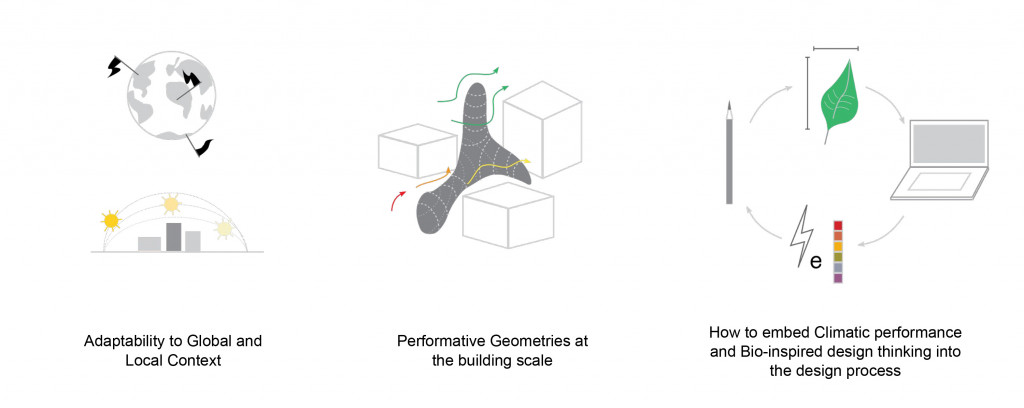
Hypothesis:
To develop a climate-adaptive facade design system which uses computational environmental analysis to identify the key climatic characteristics (taking into account conditions such as radiation, light, humidity and wind speed) of a given building, and assigns a bio-inspired skin to its facade in order mediate these conditions or utilise the natural condition of the site to achieve maximum natural indoor comfort and passive energy performance of the building.
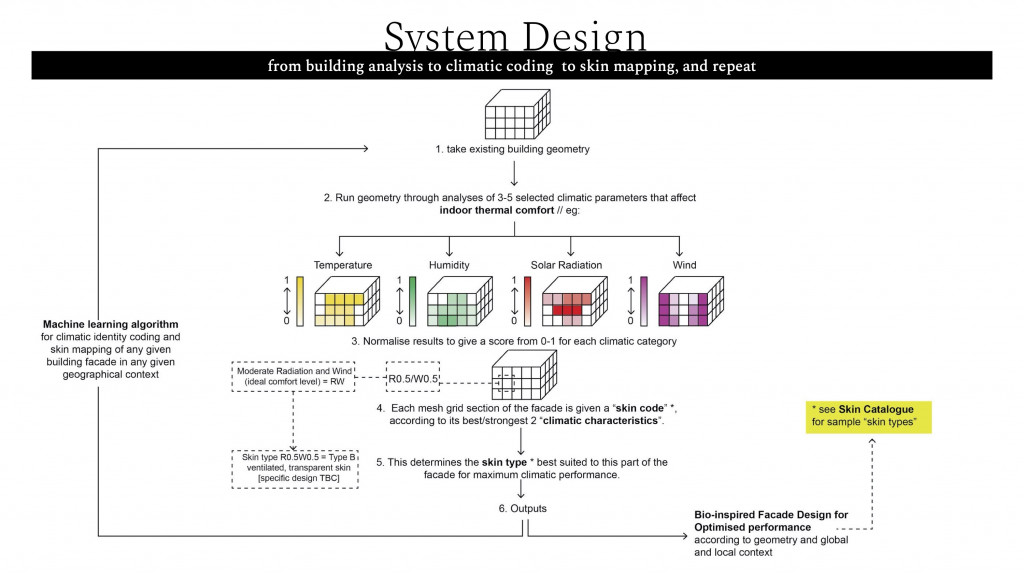
Methodology
Bio-inspired principles were analysed and applied in the design of a proposed “skin catalogue”, which presents a series of skin geometries or typologies suitable for a specific range of climatic conditions (that is, the defined range of “climatic codes”).
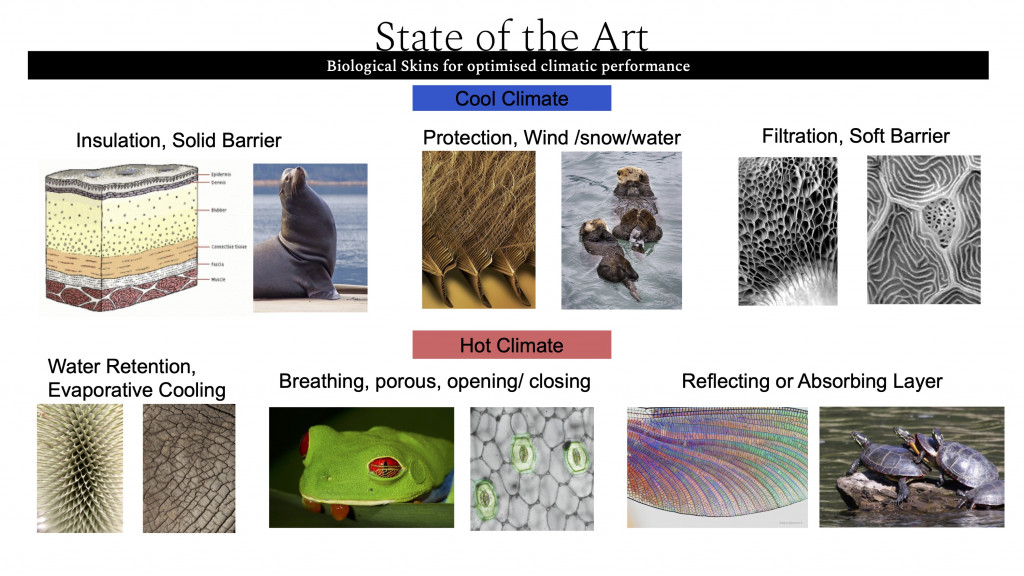
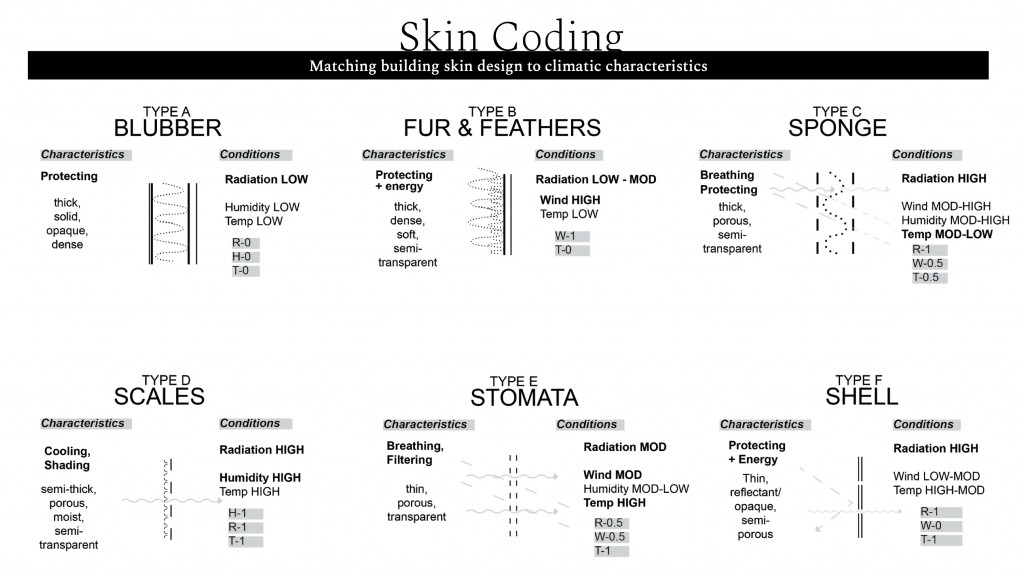
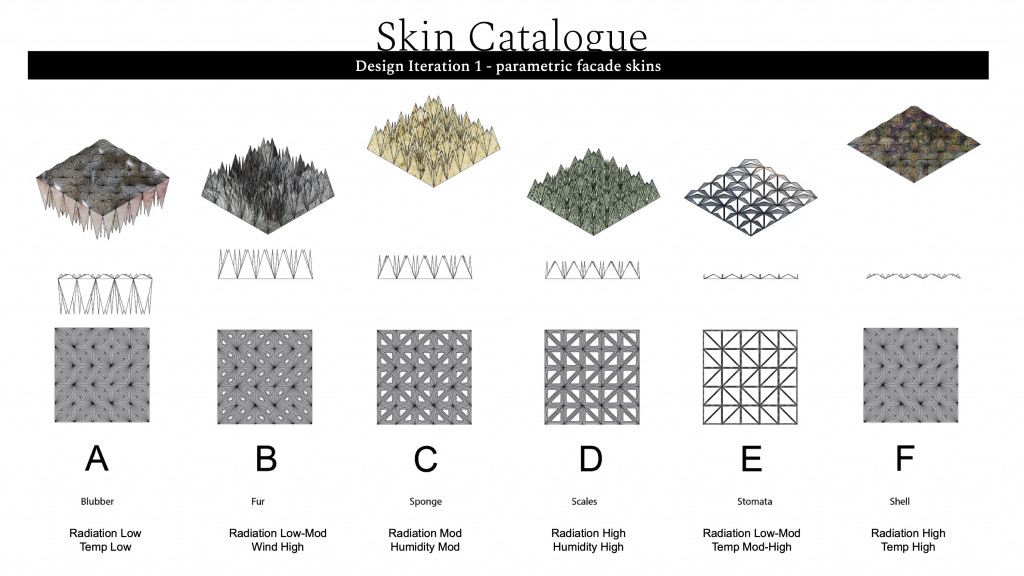
THE SKIN CODER DESIGN WORK FLOW
[analysis -> facade design]
The intent of the Skin Coder is to optimise indoor comfort of building occupants and improve the energy efficiency of the building (thus decreasing the mechanical demands for heating and cooling). The test study for the Skin Coder is a building in the barrio of Poblenou in Barcelona, Spain. However, the inbuilt adaptability of this analysis-to-skin mapping system allows for any building geometry – regardless of its geographical location and local conditions – to be input into the script, with its local EPW file. There is thus future potential to convert the facade analysis and coding script into a Machine Learning Algorithm, to streamline the climatic code identification of building geometry and subsequent skin mapping process.
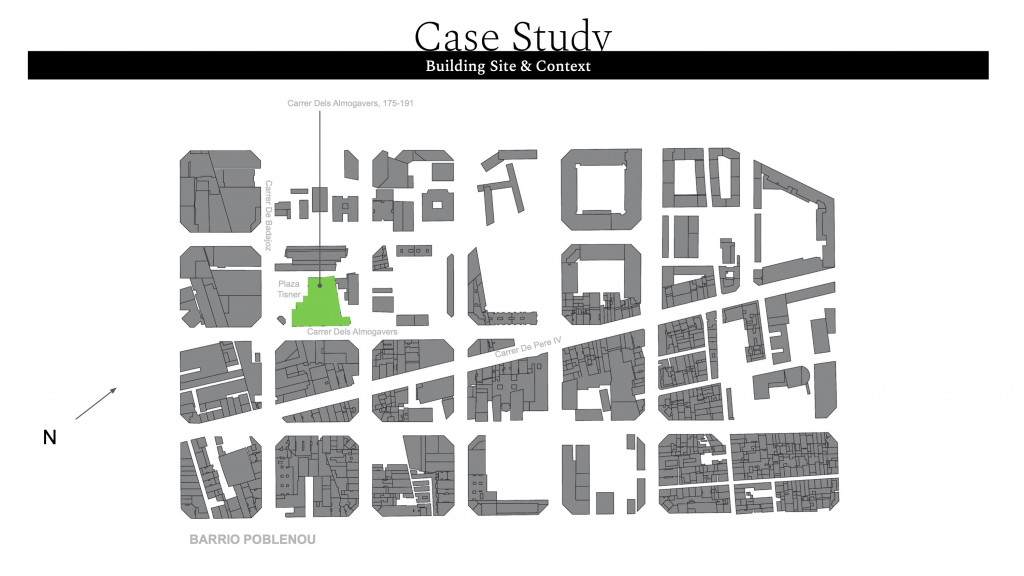
The environmental parameters of Solar Radiation, Temperature, Wind Pressure and Humidity were analysed for a given building geometry using Ladybug components in Grasshopper for Rhino. The use of Grasshopper scripting allowed the combined and codified environmental data values of the given facade subdivisions (collected from Ladybug EPW files) to be mapped with a prescribed skin geometry of best fit, for optimised climatic performance.
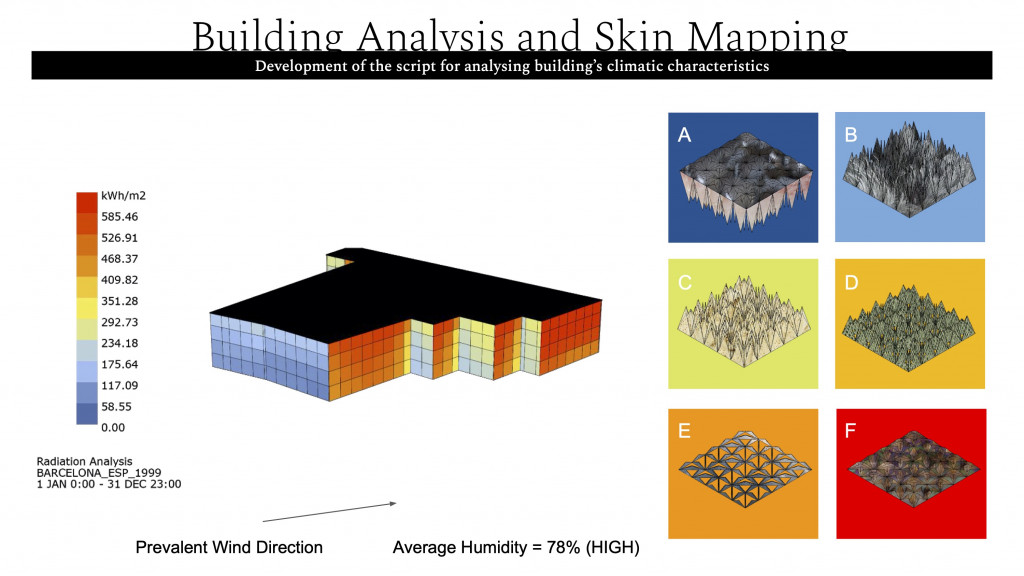
WHATS NEXT?
- advanced skin geometry design development
- climatic analysis code development
- transforming the Skin Coder into an Accessible Design Tool